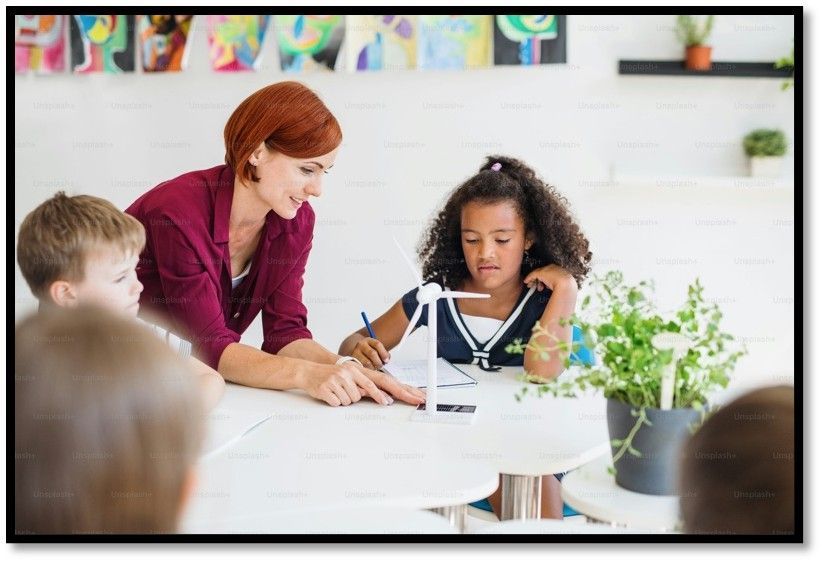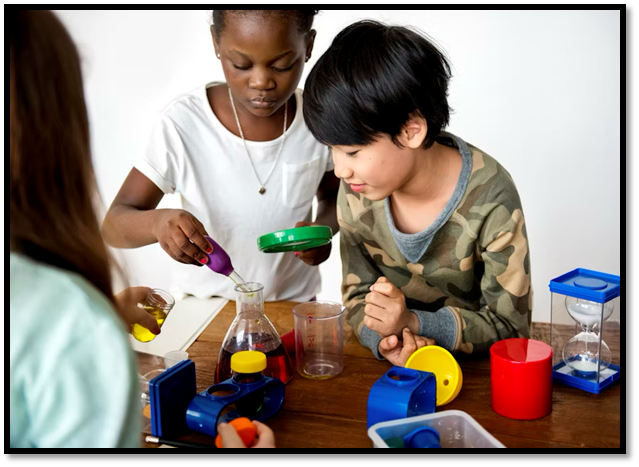Language functions as a fundamental bond which determines how we think and how we express ourselves and how we connect with everything around us. Educators need to grasp language acquisition because it enables them to discover the learning abilities of their students. The process of language acquisition reveals vital information which benefits those who care for toddlers learning their first words and students who acquire their second language at higher levels.
This blog will analyze language acquisition through its developmental stages while examining essential theoretical models which explain this process. The article will present educational strategies and practical insights, which will work in schools, community organizations, and beyond.
What Is Language Acquisition?
The human learning process which enables people to understand and speak language constitutes the definition of language acquisition. Our bodies create this powerful instinct from birth which continues to develop as we age.
The process of language learning operates similarly across all cultures because children worldwide follow the same natural language development patterns. Second language learners who study new languages during adulthood face a more difficult learning process but they need to master several of the same fundamental language principles.
Language acquisition describes the process which transforms infant babbling into skilled speech production and advanced thinking and creative abilities.
Why Is Language Acquisition Important?
Teachers need to understand language development because it enables them to help their students learn better. The program provides answers to the following questions:
What are the stages of language development in children?
The timing of language development varies because each child exists as a distinct individual with their own unique developmental path.
How can we best support students learning English as a second language?
The study of language acquisition enables us to create educational plans which determine both learning milestones and achievement benchmarks.
The 5 Stages of Language Acquisition
Before discussing theories, it's helpful to break down
language acquisition stages, particularly in child development.The learning process begins with sound recognition which leads to sentence creation and further linguistic development according to these stages.
1. The Pre-Linguistic Stage (0-12 months)
Infants use crying and cooing and babbling to express themselves which serves as the basic starting point for speech development.
Educator insights: The stage holds vital importance even though the children have not started speaking yet. The process of responding to an infant's coos establishes basic communication skills which will help them learn about social interaction and turn-taking.
2. The Babbling Stage (4-12 months)
Babies start making sounds which include “ba-ba” and “da-da.” The children begin to show patterns as they start to copy the sounds and rhythms of human speech.
Educator insights: Parents and caregivers should respond to these babbles as though they are having a normal conversation. This method helps children develop their speaking abilities while improving their capacity to communicate.
3. The One-Word Stage (12-18 months)
Babies start to speak their first words during this phase! The words "milk" and "mama" hold substantial meaning at this stage.
Educator insights: Children need to learn new words through practice so educators should teach them basic words that appear in different learning materials. Label objects or actions to make connections between words and meanings.
4. The Two-Word Stage (18-24 months)
The toddler starts to use two-word phrases by saying “want cookie”. The language starts to develop into grammar although it remains in its early stages of formation.
Educator insights: Introduce age-appropriate books and model simple sentences for them to imitate; this helps them understand syntax.
5. The Multi-Word Stage (2-3 years and beyond)
The length and complexity of sentences begin to increase. Young learners have acquired the ability to share their wants and needs and to ask questions and tell stories.
Educator insights: English language learners need to develop their vocabulary and sentence structure at the same time. Storytelling and role-play activities help students develop their fluency skills through creative expression.
Theories of Language Acquisition
Linguists together with psychologists created language acquisition theory throughout history to understand how people develop communication abilities. The theories lack a unified explanation yet they create an extensive network of knowledge when viewed together.
1. Behaviorist Theory (B.F. Skinner)
Overview: Skinner believed language is learned through imitation, reinforcement, and conditioning.The toddler will learn to repeat the word “milk” when they receive a glass of milk after saying it.
Takeaway for Educators: Positive reinforcement works! Students need praise when they use new vocabulary and make correct sentences.
2. Nativist Theory (Noam Chomsky)
Overview: Chomsky explained the Language Acquisition Device (LAD) which functions as a built-in system that enables people to learn language without requiring formal instruction. He demonstrated that children at this stage possess a natural ability to understand grammar rules.
Takeaway for Educators: Students learn language rules through exposure when teachers create environments which provide rich language experiences.
3. Cognitive Development Theory (Jean Piaget)
Overview: Piaget demonstrated that language development occurs through cognitive growth stages because children learn language by processing their expanding knowledge of their environment.
Takeaway for Educators: Educators need to adjust their language teaching methods according to the mental abilities of their students. Students learn faster when they play games that suit their age group together with hands-on activities.
4. Social Interactionist Theory (Lev Vygotsky)
Overview: Vygotsky showed that social contact functions as a base for developing language skills. Learning development occurs through the support of caregivers and peers and educators who demonstrate and back language usage.
Takeaway for Educators: Teachers should establish group work activities and peer conversations and interactive activities to develop students' language abilities.
5. Second Language Acquisition Theories (Stephen Krashen)
The Input Hypothesis of Krashen shows that language acquisition occurs when learners receive input that matches their current level but includes additional material that stays within their comprehension range (i+1). The environment needs two main elements to succeed: motivation and a low-stress atmosphere.
Takeaway for Educators: Teachers need to provide educational materials which contain information that slightly exceeds student understanding levels and these materials should include realistic situations and basic dialogue exchanges.
Supporting Second Language Acquisition
The learning process of older students acquiring a second language (L2) shows similarities to child language development stages yet it follows a distinct pattern. Adults or teens may rely more heavily on explicit learning (e.g., grammar instruction) than instinctive learning.
Educators need to apply these strategies to help their students:
Create Meaningful Contexts: Students should practice their new language through real-world materials which include newspapers and menus and videos.
Encourage Practice: The early stages of language acquisition for L2 learners can be intimidating.Young people need to practice speaking and writing in settings that do not create stress.
Students who master a new language should receive praise from teachers when they use their new language skills.
Practical Tips for Educators
The educational process which helps students learn language requires creative methods and patient work and teaching strategies that focus on individual students. The following methods will help you apply your knowledge about language development stages and theoretical frameworks in educational settings.
Model Language Constantly: Speak with intention and clarity in your speech. Children should receive grammatically correct sentences because they use them to learn how to speak.
Use Visual Supports: Flashcards, photos, and videos are incredibly effective for driving word associations, especially for new learners.
Include Movement and Play: The learning process becomes more effective when students participate in activities which include movement-based games like charades and singing “If You’re Happy and You Know It.”
Provide Scaffolding: Divide the work into smaller sections. Students need to learn new vocabulary before they start writing paragraphs according to the example.
Leverage Peer Learning: Students with different skill levels should be paired together to practice their conversation skills. Social learning tools help peers work together.
Be Patient: Learning a new language takes time because it requires multiple stages before reaching fluency. Teachers need to work with their students to achieve important milestones because these achievements will help their students stay motivated.
Building a Community Through Language
Language serves as the essential link which enables people to build relationships and exchange ideas and discover their cultural heritage. Educators who support language development enable students to express their thoughts while developing their ability to understand what others say. Students need to understand their life experiences because every word they speak or write contains the potential for their upcoming success.
Educators who study language development stages and theories create educational environments which help students learn language while developing social skills. Teaching becomes worthwhile because these small victories show us the purpose of our work when we hear a toddler say their first word and when we witness a teenager succeed in their second language.
Need help developing a english as secondary language for your school students?
GrapeSEED can help!






